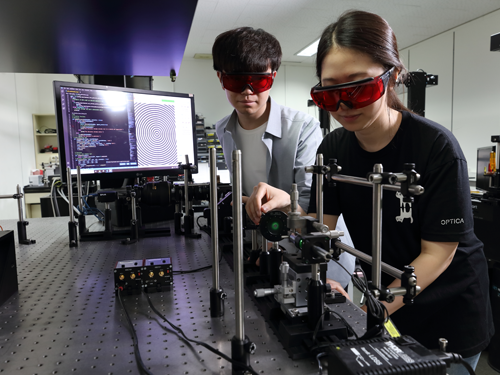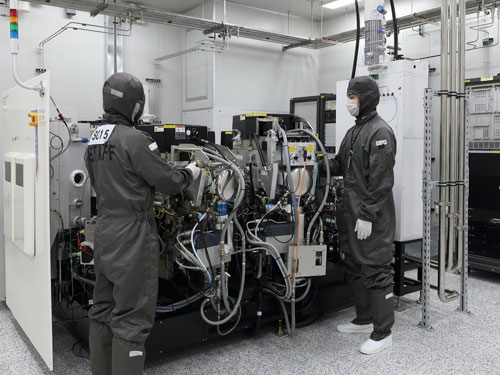- About
- Academics
-
Undergraduate Programs
- Civil and Environmental Engineering
- Architecture and Architectural Engineering
- Mechanical Engineering
- Industrial Engineering
- Energy Resources Engineering
- Nuclear Engineering
- Materials Science and Engineering
- Electrical and Computer Engineering
- Naval Architecture and Ocean Engineering
- Computer Science and Engineering
- Aerospace Engineering
- Chemical and Biological Engineering
-
Graduate Programs
- Civil and Environmental Engineering
- Architecture and Architectural Engineering
- Mechanical Engineering
- Industrial Engineering
- Energy Systems Engineering
- Materials Science and Engineering
- Electrical and Computer Engineering
- Naval Architecture and Ocean Engineering
- Computer Science and Engineering
- Chemical and Biological Engineering
- Aerospace Engineering
- Interdisciplinary Program in Technology, Management, Economics and Policy
- Interdisciplinary Program in Urban Design
- Interdisciplinary Program in Bioengineering
- Interdisciplinary Program in Artificial Intelligence
- Interdisciplinary Program in Intelligent Space and Aerospace Systems
- Chemical Convergence for Energy and Environment Major
- Multiscale Mechanics Design Major
- Hybrid Materials Major
- Double Degree Program
- Open Programs
-
Undergraduate Programs
- Campus Life
- Communication
- Prospective Students
- International Office
- HOME
- Academics
- Undergraduate Programs
- Electrical and Computer Engineering
- Civil and Environmental Engineering
- Architecture and Architectural Engineering
- Mechanical Engineering
- Industrial Engineering
- Energy Resources Engineering
- Nuclear Engineering
- Materials Science and Engineering
- Electrical and Computer Engineering
- Naval Architecture and Ocean Engineering
- Computer Science and Engineering
- Aerospace Engineering
- Chemical and Biological Engineering
Electrical and Computer Engineering
 ChairYongtaek Hong
ChairYongtaek Hong Tel02-880-7265
Tel02-880-7265

Introduction
The Department of Electrical and Computer Engineering offers a cutting-edge curriculum in electrical and electronics engineering that produces high-quality personnel to meet the demands of industry and contribute to the improvement of scientific technology in Korea. The department used to consist of separate schools for electrical, electronic, and control and measurement engineering. These departments were integrated into a single Department of Electrical Engineering in 1992. The department conducts education and research in these areas to support the application of advanced technology for human well-being throughout society in the future.
The areas of study in this department are broad and inter-related to each other,
covering the elements of semiconductors, electrical energy systems, electronic physics, lasers, electromagnetic waves, information and communication technology, control and measurement, automation, computers, and very large scale integration. After building a foundation of knowledge on these subjects through their freshman, sophomore, and junior years, students in their senior year will select an area of study that will be useful in graduate school or industry.
The research institutes associated with this department include the Inter-university Semiconductor Research Center, Automation and Systems Research Institute, Electrical Engineering & Science Research Institute, and Institute of New Media & Communications. All are equipped with lecture rooms and laboratories, providing an environment for students to focus on their studies. The education and practice provided by these institutes will foster the development and application of new technology in this field and help develop the related industries, ultimately realizing benefits to society.
Research Areas
The department has almost 60 graduate school labs and institutes, all furnished with the latest sophisticated equipment, which provides an optimum environment for research.
Semiconductor Devices and Integrated Circuits
Research in the Semiconductor Devices and Integrated Circuits area focuses on the components that provide the basis for contemporary electrical engineering, such as raw materials and their properties, processes, and circuits. In the future, semiconductors less than 0.1 ?m in size will be produced. Thus, research on quantum physics and noise is conducted. In addition, Si and GaAs transistors will be optimized and new semiconductor devices will be developed using theoretical analyses and computer simulations. Research will also cover not only the electrical characteristics of transistors, but also those of optical communication devices and microsensors. Topics such as modern control systems, wireless communication, and computers also belong to this field.
Electric Energy Systems
Research in the Electric Energy Systems field focuses on circuits and control methods for using semiconductor devices to convert alternating current into direct current, transmission of electrical energy, theories on storing and supplying electrical energy, and other aspects of power system engineering. It also includes theories on converting electrical energy into mechanical energy, the electrodynamics of related machinery, storing electrical energy through superconduction, massive electricity conversion, and high-velocity gases.
This field also considers the electrical power economy, including detailed research planning and operating an electrical power system on the market as a form of competition for efficient and reliable administration of the generation, management, and regulation of the power network and consumption management. In addition, on the basis of theories from control engineering, the area analyzes the stability of the power/information technology/trade/interchange networks supporting the market, thereby examining the entire electrical power industry. The economic efficiency and evaluation of new technology and power systems are optimized, with the ultimate goal of developing useful technology in the electrical engineering field.
Electron Physics and Lasers
The Electron Physics and Lasers area covers the fundamental technologies used in electrical and electronics engineering. It examines the physics related to electrical and electronic devices and studies the elements and devices used in the industry. Research is being conducted on how to create high-definition TV using thin-film transistor liquid crystal displays, plasma display panels, and light-emitting diodes; three-dimensional display technology using holograms is also being studied. The development of semiconductor manufacturing processes using plasma, the composition of large-area diamond thin films, and the development of high-efficiency/low-loss electrical switches are also being investigated. Active research in progress also includes information processing through large-scale optical memory/connection/delay lines and quantum device modeling.
Information and Communication Technology and Electromagnetic Waves
The field of Information Communication and Electromagnetic Waves covers a wide range of research topics, such as communication systems, digital signal processing, electromagnetic engineering, and acoustics. Research on communication systems creates more efficient, accurate, and reliable ways of exchanging and storing information. Attention has focused recently on future high-speed information transmission and satellite/mobile communications, with an emphasis on communication networks and technology that help users exploit new communication methods. Digital signal processing includes the emission, processing, and analysis of audio, video, communication, and radar/sonar signals. Processing of audio, video, and digital video signals is an important research topic for supporting a developing multimedia society. Techniques such as those of compression and improvement of signal/data and filter processing are important in this area. The goal of electromagnetic engineering is to produce a wide range of items, such as circuits and high-frequency integrated circuits. Acoustics focuses on theories and applications of supersonics and is applied in electronic musical instruments and medical instruments.
Control Measurement and Automation
Research on Control Measurement and Automation focuses on matters related to automated systems and their measurement and control in order to achieve highly sophisticated technologies in the future. Research is being conducted on the measurement of physical quantities, feedback control, robust control, intelligent control, other control theories, and production automation, for example, factory automation. The use of robots in automation, precise sub-control equipment, real-time vision and search, and precision measurement will also be covered. This field also covers control, measurement, and communication related to large-scale computer automation, such as that described by the Common Information Model. Navigation equipment such as GPS is also studied for its relevance to the application of control theories to missiles, satellites, and other spacecraft. Control methods for large systems such as power plants are also investigated. Exploration of this vital field will continue with research on the rapidly advancing fusion of computers and control/measurement systems.
Computers and Large-Scale Integration
The Computer and Large Scale Integration area focuses on error-free computer-aided design of the millions of transistors that make up a microprocessor. In addition, compilers, operating systems, and databases are being studied in order to effectively apply computer systems using these processors. In particular, research on animation and graphics that link human brain activity with electrical circuits, high-speed processing of video/audio signals, and an application-specific integrated circuit design method are expected to be widely used to actualize virtual reality in next-generation computers.


